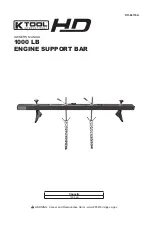ECP5 and ECP5-5G High-Speed I/O Interface
Technical Note
© 2014-2020 Lattice Semiconductor Corp. All Lattice trademarks, registered trademarks, patents, and disclaimers are as listed at
All other brand or product names are trademarks or registered trademarks of their respective holders. The specifications and information herein are subject to change without notice.
FPGA-TN-02035-1.3
47
VREF1 of the bank where the DQ, DQS, and DM pads are located must be available to be used as a reference
voltage input.
Do not assign an I/O signal to VREF1 in the preference file. VREF1 for the bank has to be available for the DDR
memory interface.
Unused VREF1 can be taken as a general purpose I/O in the bank where no DQ/DQS pad is located.
6.7.
Pin Placement Considerations for Improved Noise Immunity
In addition to the general pinout guidelines, you need to pay attention to additional pinout considerations to minimize
simultaneous switching noise (SSN) impact. The following considerations are generally necessary to control SSN within
the required level:
Properly terminated interface
SSN optimized PCB layout
SSN considered I/O pad assignment
Use of pseudo power pads
The guidelines listed below address the I/O pad assignment and pseudo power pad usage. Unlike the pinout guidelines,
they are not absolute requirements. However, it is recommended that the pin placement follow the guidelines as much
as possible to increase the SSO/SSI immunity.
Place the DQS groups for data implementation starting from the middle of the (right or left) edge of the ECP5 and
ECP5-5G device. Allow a corner DQS group to be used as a data group only when necessary to implement the
required width.
Locate a spacer DQS group between the data DQS groups if possible. A DQS group becomes a spacer DQS group if
the I/O pads inside the group are not used as data pads (DQ, DQS, DM).
In DDR2, DDR3, and DDR3, the pads in a spacer group can be used for address, command, control or CK pads
as well as for user logic or the pseudo power pads.
It would provide better noise immunity if no more than two data DQS groups are consecutively placed. If more
data DQS groups need to be placed consecutively, use the pseudo power pads as many as possible to isolate
each DQS group more effectively from others.
It is recommended that you locate a few pseudo VCCIO/ground (GND) pads inside a spacer DQS group and at least
one pseudo VCCIO in the data DQS group. An I/O pad becomes a pseudo power pad when it is configured to
OUTPUT with its maximum driving strength (that is, SSTL15, 10 mA for DDR3) and connected to the external VCCIO
or ground power source on the PCB.
Your design needs to drive the pseudo power I/O pads according to the external connection. (that is, you
assign them as OUTPUT and let your design drive
1
for pseudo VCCIO pads and
0
for pseudo GND pads in your
RTL coding.)
Locating two to four pseudo power pads in a spacer DQS group should be sufficient to provide suppressing the
SSN impact.
Locate a pseudo power pad in a location where it can provide the best balanced and isolated separation.
You may have one or more remaining pads in a data DQS group which are not assigned as a data pad in a DDR
memory interface. Assign them to pseudo VCCIO or pseudo GND. Preferred location is in the middle of the group
(right next to a DQS pad pair) if the DQS group is isolated by a spacer DQS group. If consecutively placed, locating
the pseudo power pads to the edge of the group may be more effective. Note that you may not have this extra pad
if the DQS group has 12 pins only and includes a VREF pad for the bank.


















